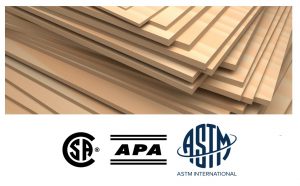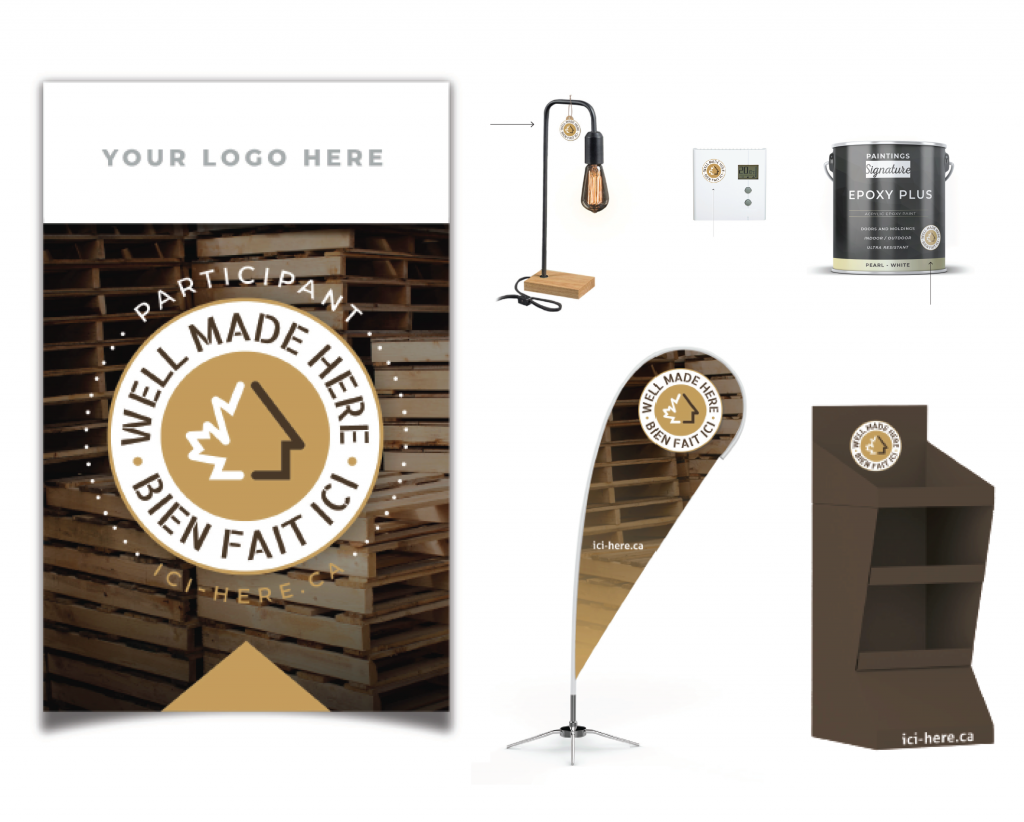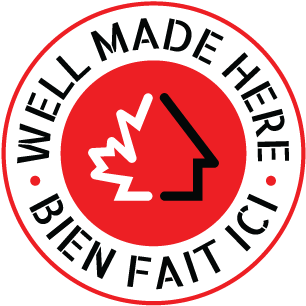The “Well Made Here” logo: a powerful antidote to the effects of the pandemic on the supply chain
The presence of the “Well Made Here” logo adds a touch of authenticity to accredited products. Therefore, participating manufacturers are encouraged to include it on labels, packaging and, promotional merchandising material.
More than ever, products sourced from other markets are being offered to retail buyers responsible for the determining what’s available in-store. Sometimes knockoffs, many of which are substandard, the proposed items do not meet construction codes in effect in Canada, or else, they are not prescribed for certain uses, which makes them poor choices compared to fully certified domestically made materials.
The pandemic has had numerous impacts on industry practices. Not all are for the better. Retail sales and profit margins may have risen over the last 18 months, but the cost of materials has also risen. There are supply issues. Deliveries are often late. All of which leaves retailers looking for viable solutions to counter low or nonexistent stock levels and to fulfill orders from contractors and customers faster.
Enter a wave of opportunists who are invading the market and seeking to influence retail purchasers in choosing substandard, uncertified building materials that are not in compliance with construction codes in effect here.
One such example is plywood sourced from China. This product is available at advantageous price points, so it is tempting to add it to the mix. However, this material is rated for decorative use only. Its composition, structural value and strength are not fit to support the same weight as plywood that holds Canadian Standards Association (CSA) certification, the Engineered Wood Association’s (APA) certification or the American Society for Testing and Materials (ASTM). If the plywood meets any of three aforementioned standards, the certification markings appear on the product.
Standards and construction codes exist for a reason. The value of a product is reflected in its price. It may be tempting to opt for items that generate higher profit margins. Ultimately, the integrity of the building material, the level of comfort in the home, the risk of failure and security issues that could arise, not to mention the probability of contractor or consumer laws suits, all of these must not be overlooked.
“It has become increasingly important for everyone from manufacturers to retailers, building contractors, DIYers and consumers to have a visual reference that tells them a product meets industry standards. The certifications serve that purpose but the “Well Made Here” accreditation also tells them a product’s last major transformation occurred here in Canada.” explains Célie Cournoyer, Director of Operations.

